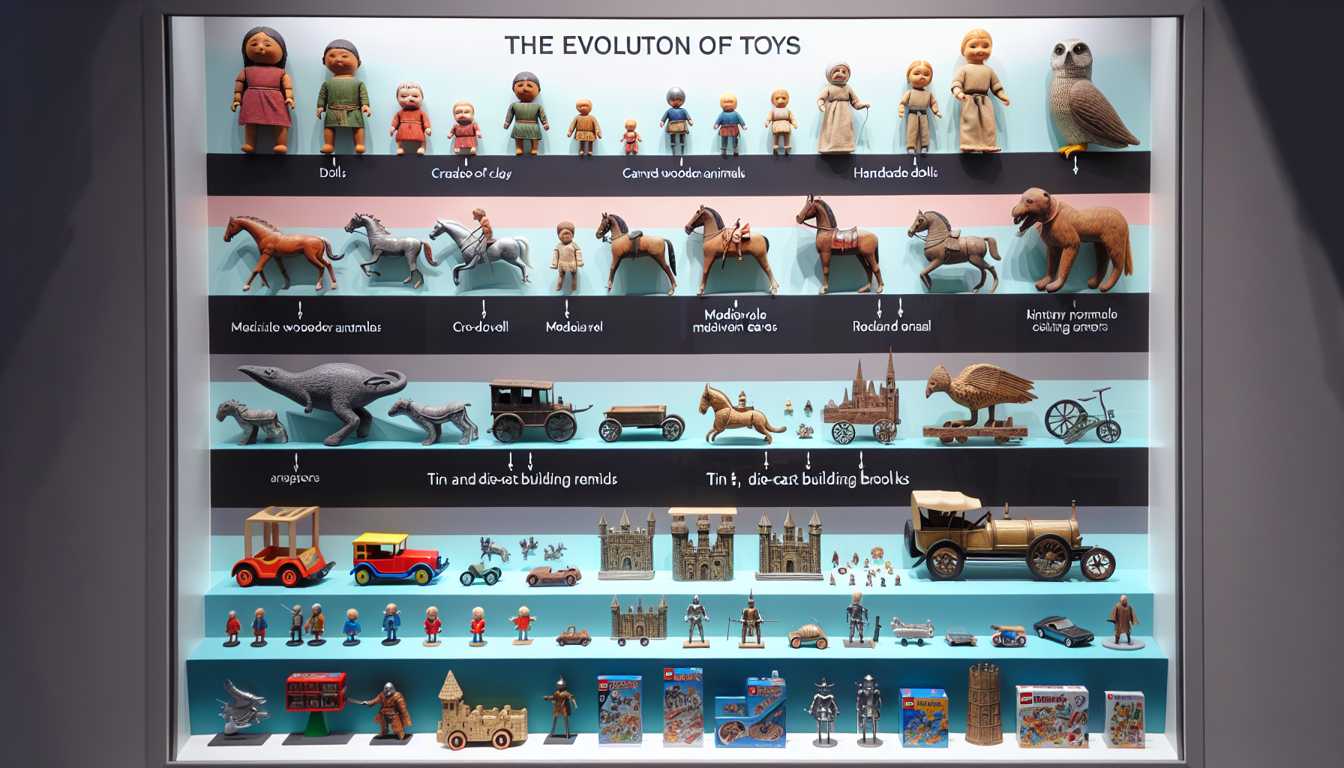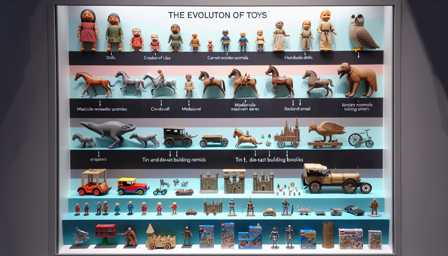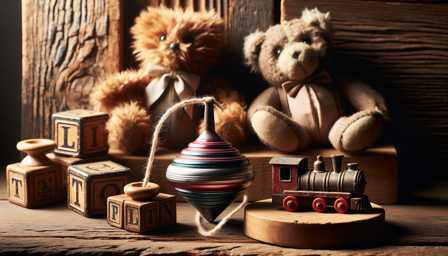
The Evolution of Toys: From Ancient Times to the Modern Era
Toys have been an integral part of human culture and childhood for millennia. From the simplest wooden carvings of ancient times to the high-tech gadgets of today, the evolution of toys reflects broader changes in technology, society, and culture. This article explores this fascinating journey through various eras, highlighting key developments and iconic toys that have delighted generations of children.
Ancient Times (up to 500 AD)
The earliest toys, discovered by archaeologists, were made from natural materials like wood, stone, and clay. These toys were often miniatures of everyday objects, such as dolls, animal figures, and chariots.
- Egyptian Toys: In ancient Egypt, children played with dolls made from papyrus-reed, and wooden toy animals with movable parts.
- Greek and Roman Toys: Greek and Roman children had similar toys, including dolls made of terracotta, wood, or wax, and miniature chariots. The yo-yo, believed to have originated in China, was also a popular toy in ancient Greece.
Medieval Era (500 - 1500 AD)
During the medieval period, toys reflected feudal society and were often educational. Wealthy children had access to more elaborate toys.
- Dolls and Knights: Dolls continued to be popular, often dressed in contemporary fashion. Miniature knights and soldiers were common, reflecting the militaristic nature of the era.
Renaissance (1500 - 1700 AD)
The Renaissance period saw a burst of creativity and learning, which also influenced toy making.
- Puzzle Locks and Mechanical Toys: Intricate puzzle locks and mechanical toys became popular among the wealthy, showing off the era's advances in engineering and craftsmanship.
Industrial Revolution (1760 - 1840 AD)
The Industrial Revolution brought mass production and new materials, which dramatically changed the toy industry.
- Metal and Tin Toys: Factories began producing toys in metal and tin, including miniature trains and mechanical animals.
- The Kaleidoscope: Invented in 1816, the kaleidoscope became a popular toy, fascinating children with its changing patterns and colors.
20th Century
The 20th century witnessed the most significant transformation in toys, with the introduction of plastics and electronic components.
- Teddy Bear (1902): Named after President Theodore Roosevelt, the teddy bear became an iconic plush toy.
- Lego (1949): The introduction of Lego bricks in 1949 revolutionized construction toys, allowing endless possibilities for creative play.
- Barbie Doll (1959): Barbie, introduced by Mattel, became a cultural icon and was instrumental in popularizing fashion dolls.
- Video Games (1970s-1980s): The advent of video games in the late 20th century opened a new era in toys, with consoles like Atari and, later, Nintendo.
21st Century
The 21st century has seen the digitalization of toys and the introduction of smart toys.
- Smart Toys: Toys with AI capabilities, like interactive robots and educational games, have become popular, blending play with learning.
- Virtual Reality: The rise of virtual reality technology has introduced a new dimension to gaming, with immersive experiences for older children and adults.
Conclusion
From ancient dolls to virtual reality games, the evolution of toys mirrors the evolution of civilization itself. Each era's toys reflect its technology, societal norms, and cultural values. As technology continues to advance, the future of toys is likely to be as dynamic and innovative as its past, continuing to bring joy and learning to children of all ages.


